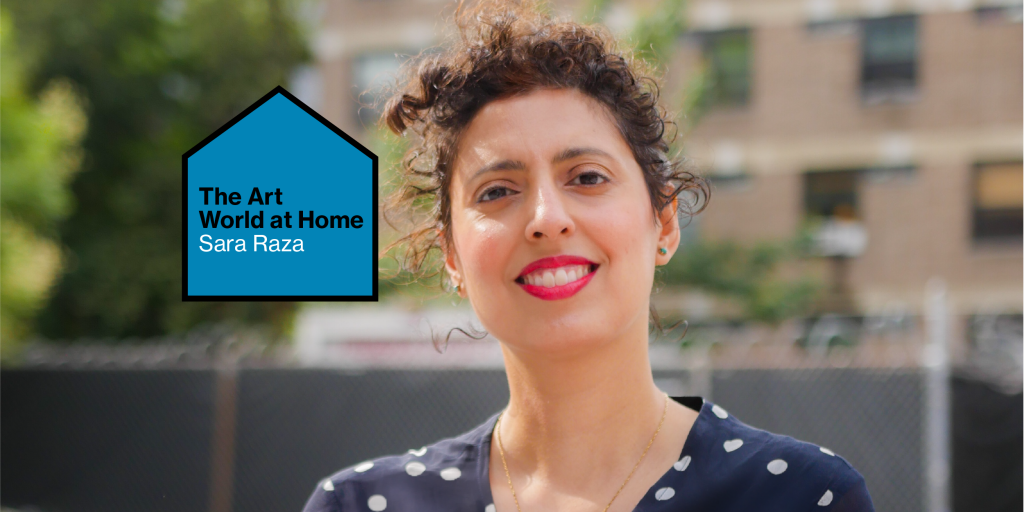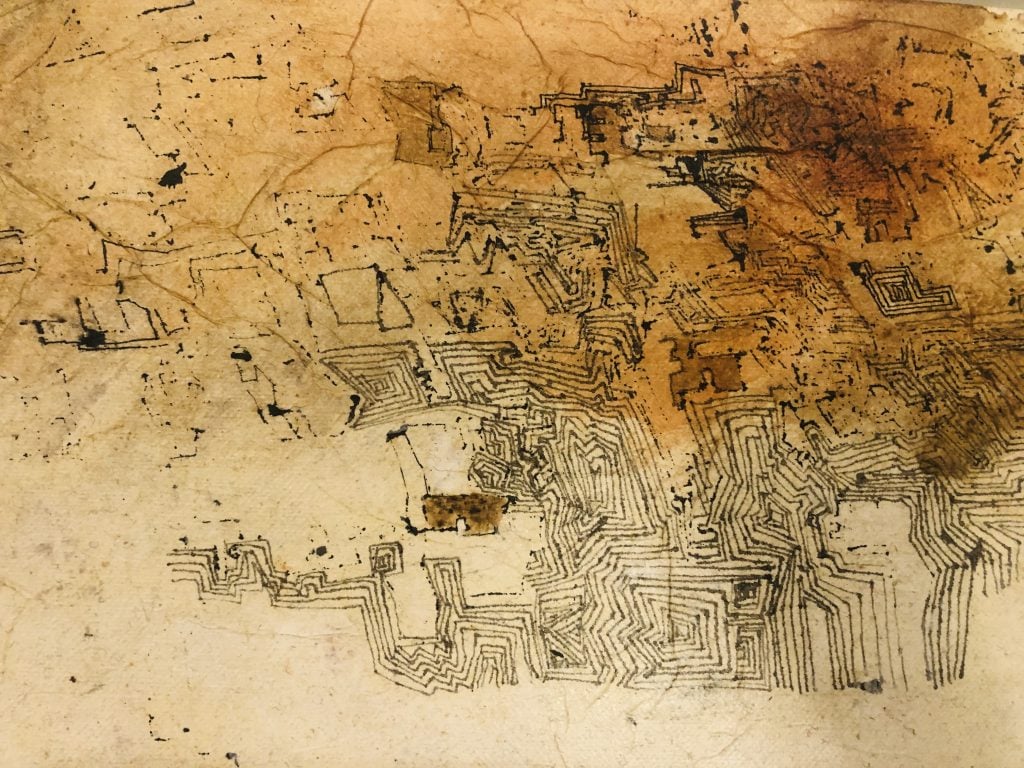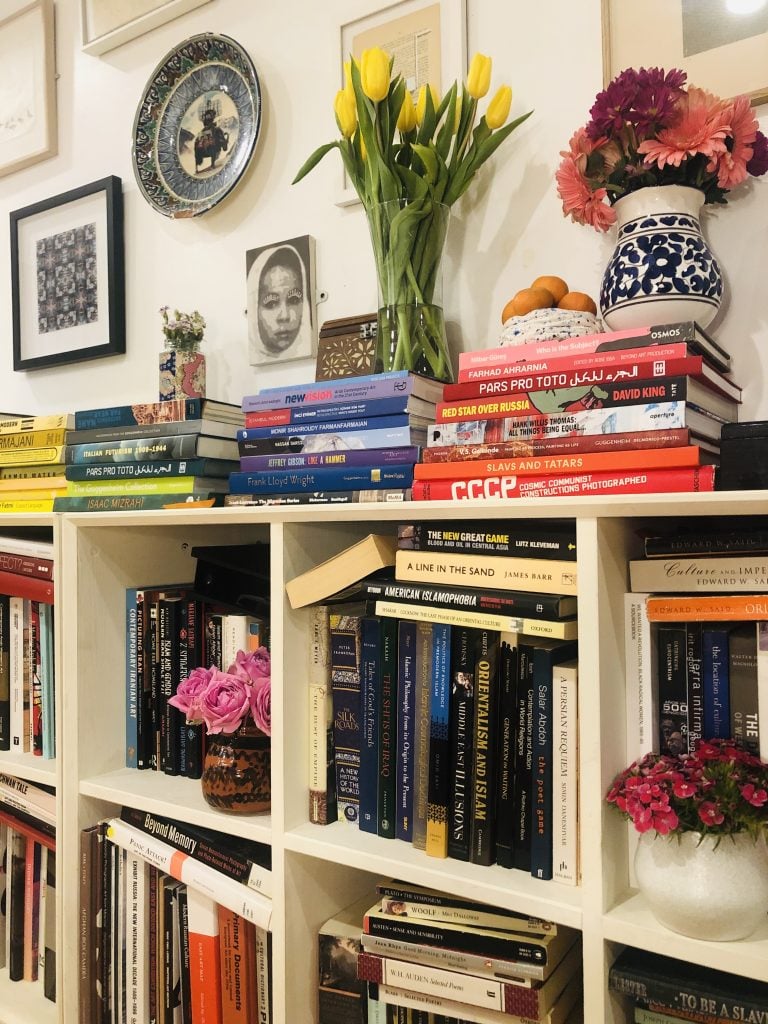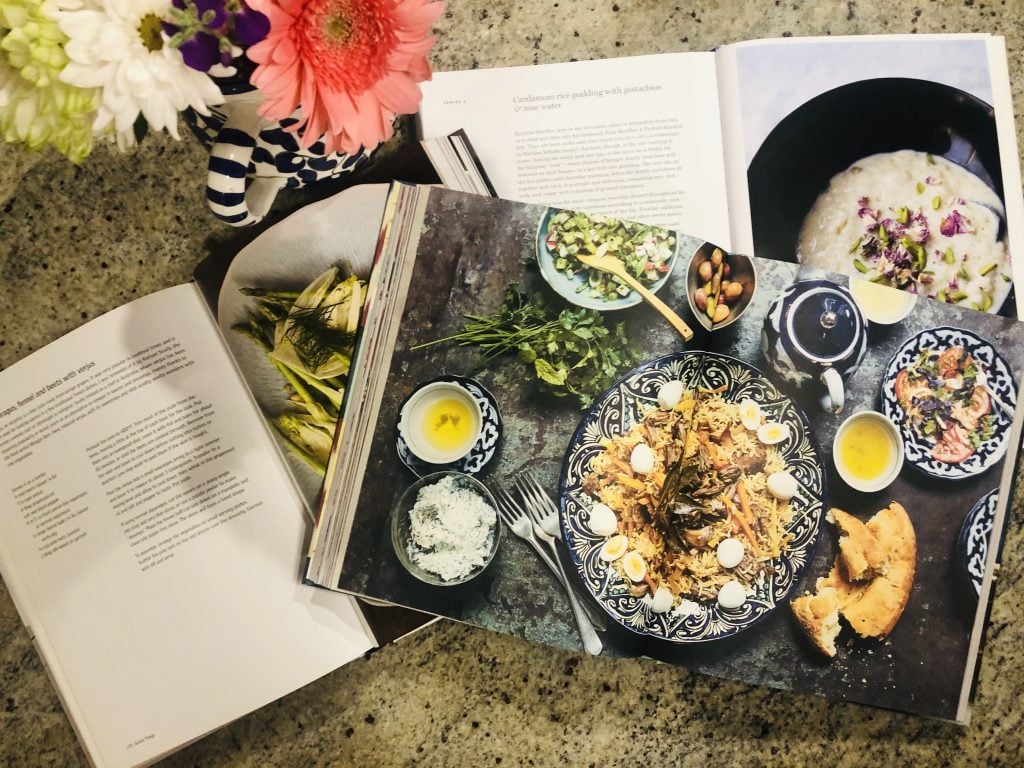People
The Art World at Home: Curator Sara Raza Is Working on a Mid-Career Survey of Ahmed Mater and Consulting Her Turkic Recipes
The associate director of Hawai‘i Contemporary catches us up on her latest activities.

The associate director of Hawai‘i Contemporary catches us up on her latest activities.

Artnet News

The curator Sara Raza has spent much of the past few months doing what she does best: organizing exhibitions and serving as a locus of art-industry activity.
Formerly a Guggenheim UBS MAP curator for the Middle East and North Africa, she has also curated exhibitions for the Rubin Museum of Art in New York; was public programs curator at Tate Modern in London; and currently teaches at the School of Visual Arts in New York.
We caught up with Raza to hear about the next edition of the Hawai‘i Triennial (which is organized by Hawai‘i Contemporary, where she is associate director), how she works with her research team, and what she’s been reading as of late.
What are you working on right now?
I recently joined Hawai‘i Contemporary (formerly the Honolulu Biennial Foundation) as their associate director in a newly created position and am working with the team and lead guest curator, Melissa Chiu, the director of the Hirshhorn Museum in Washington, DC, towards the Hawai‘i Triennial 2022. I’m also designing inter-island programming to support artists and initiate fellowships geared towards the next generation of arts professionals inside Hawaii.
In tandem, I am working on my independent curatorial work and preparing a solo show of Saudi artist Ahmed Mater, an early mid-career retrospective, that interweaves four decades of history related to Saudi Arabia and the greater Middle East, focusing on the years 1979 to 2019. The show will open next spring in a brand new multifunctional art gallery and educational space in Riyadh called Lakum, which means “for you” in Arabic.
I am also preparing for a larger group exhibition at Tufts University Museum that opens in 2022 that explores the issue of environmental collapse from a global perspective and am working on a posthumous legacy project on the work of Danish-born artist and textiles designer Lise Allam, who recently passed away in 2018, and had lived and worked in Egypt for the majority of her life.
In addition, I am also completing a book on contemporary art entitled Punk Orientalism that focuses on post-Soviet contemporary art from Central Asia and the Caucasus.
Walk us through the when, where, and how of your approach to these projects on a regular day.
I work across multiple time zones and often start my day early, working on my independent curatorial projects that are produced through my global curatorial studio, Punk Orientalism, based in New York, which serves as an important bridge between the US, Middle East, and Asia.
My mornings range from working on my own manuscript to ideating research-based curatorial projects with international artists over Zoom or Whatsapp and providing consultancy to various ministries of culture in the Middle East and Central Asia. I have three curatorial fellows working with me in the studio: recent Columbia MA graduate Rotana Shaker; Muheb Esmat, who recently graduated from the Bard MA Curatorial Studies program; and Olakiitan Adeola, one of my current MA students at the SVA. The fellows support the research projects that the studio maintains, but equally, I see myself as investing in their professional development as part of my own curatorial legacy of mentoring and nurturing the next generation of curators.
Conversely, the afternoons are usually dedicated to working with my colleagues and board in Hawaii as we gear up to present the Hawai’i Contemporary Art Summit in 2021, which is swiftly followed by the Hawai’i Triennial in 2022. Hawaii has its own unique cultural topography and truly is a gateway between the continental US and the Pacific region. Having worked previously in West and Central Asia, there are many transcultural connections in the ways in which indigenous artists have developed an art historical and curatorial practice and focus that moves beyond predominantly Euro-American-centric thinking, and instead draws both from ancient indigenous knowledge and praxis.

An untitled abstract architectural drawing by Nadia Kaabi-Linke. Courtesy Sara Raza.
What’s your favorite work of art in your home and why?
One of my favorite works of art is an untitled abstract architectural drawing by the Tunisian-born, Berlin-based artist Nadia Kaabi-Linke. She produced this work whilst completing her Ph.D. at the Sorbonne University in Paris and it’s a memorial to the catastrophic earthquake in the ancient Iranian city of Bam that occurred at the end of 2003. It consists of two layers of papers: on the upper layer is the actual drawing, and the bottom layer is where the paper has absorbed the ink from the top layer. Much of Nadia’s work poetically explores the idea of physical and metaphorical traces, memory, and ideas related to perception.
What is bothering you right now?
The ongoing rollback of civil liberties, climate catastrophe, and the deep-seated ignorance towards science and logic.
What was the last thing that made you laugh out loud?
The recent presidential debates have been particularly amusing, especially the guest appearance of a fly atop of VP Mike Pence’s head, which was a welcome respite, as I don’t think I have laughed that much in a long time.
Are there any movies, music, podcasts, publications, or works of art that have made a big impact on you recently? If so, why?
I have been reading three books by phenomenal female scholars in preparation for the MA course on decolonizing art and technology that I will be teaching next spring for New York University’s Interactive Telecommunications Program: Safiya Umoja Noble’s Algorithms of Oppression (NYU Press); Rosi Braidotti’s Posthuman Knowlege (Polity Press); and Ruha Benjamin’s Race After Technology (Polity Press). The advent of technology, particularly the internet, is something that I have always been interested in, its biases, functions, capacity, and value systems are all truly fascinating to me at both a micro and macro scale.
I also recently listened to a really engaging podcast produced by the blockchain consortium and laboratory Agentic Group entitled “America’s Long Hack” with acclaimed Finnish computer programmer Harri Hursti, which explores the role of technology and culture in the history of American vote-hacking.
I have also been revisiting a lot of Iranian new-wave cinema from the 2000s, where fiction and reality regularly blur, resulting in allegorical films that questioned regimes of “truth,” such as within the cinematic works by the late, great Abbas Kiarostami and Mohsen Makhmalbaf.

Sara Raza’s home library. Courtesy Sara Raza.
What is your favorite part of your house and why?
My sanctuary at home is my eclectic library, and as a curator and writer, I am aware that ideas don’t fall out the sky. I have amassed a growing library of ancient and modern texts on philosophy, art, and history. Wherever there are books, I am happy!
Are there any causes you support?
Accessible education is something that is very important to me, and I would like to highlight the work of The Black School, an experimental art school teaching art and radical black history, which is run by artists Joseph Cuillier and Shani Peters. It offers an alternative and parallel curriculum to that of the mainstream.
Globally, I support the empowerment of female literacy and life skill programs in Iran and Afghanistan and admire the work of Omid Foundation, whose work is dedicated to supporting marginalized young women. Also, the recent tragic explosions in Beirut have had an awful impact on the livelihoods of creative people whose studios and businesses were destroyed. Independent organizations such as @creativesforlebanon, @slowfactory, and @artrelief4beirut are all doing commendable work by raising awareness and funds to support and rebuild the creative ecosystem in Lebanon.
What is your guilty pleasure?
Scrolling through the Instagram accounts of chefs.

Sara Raza’s cookbook set up. Courtesy Sara Raza.
What’s going on in the kitchen these days? Any projects? And triumphs or tragedies?
My Middle Eastern and Central Asian cookbooks have most definitely made a major comeback in my kitchen and I’ve been drawing on recipes by my favorite chef, Yotam Ottolenghi, as well as Persian and Turkic recipes that have been passed down from my maternal grandmother that cover the cuisine of Afghanistan, Anatolia, Azerbaijan, and Uzbekistan. Being of both Persian and Central Asian origin means that food and home cooking is an extremely important part of domestic life, and the slowing down of life in the last months has resulted in me spending more time slow-cooking for myself and loved ones.
Which two fellow art-world people, living or dead, would you like to convene for dinner, and why?
The most interesting dinner party for me would be the meeting of the ancient and the contemporary, where Persian miniature painting, folk art, geometry, history, and poetry would collide. Therefore, it would have to be another opportunity to dine with the recently deceased Iranian artist Monir Shahroudy Farmanfarmaian, who is best known for her mirror works, along with the 16th-century Persian miniature painter Reza Abbasi, who was active during the Safavid dynasty during the reign of Shah Abbas I. To be situated in the company of two such astounding historical figures who are separated by thousands of years would be a truly memorable experience.